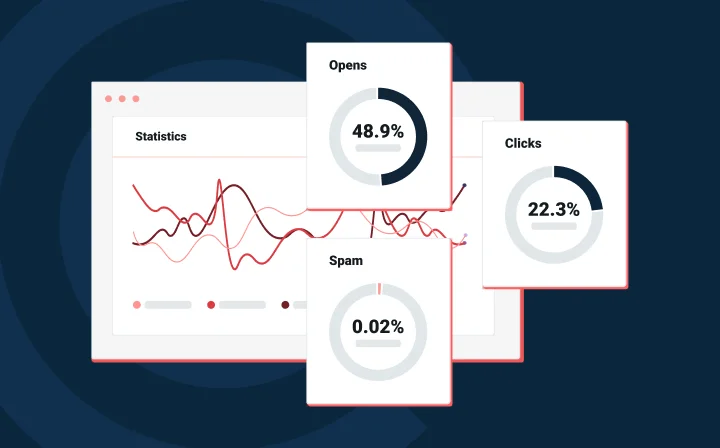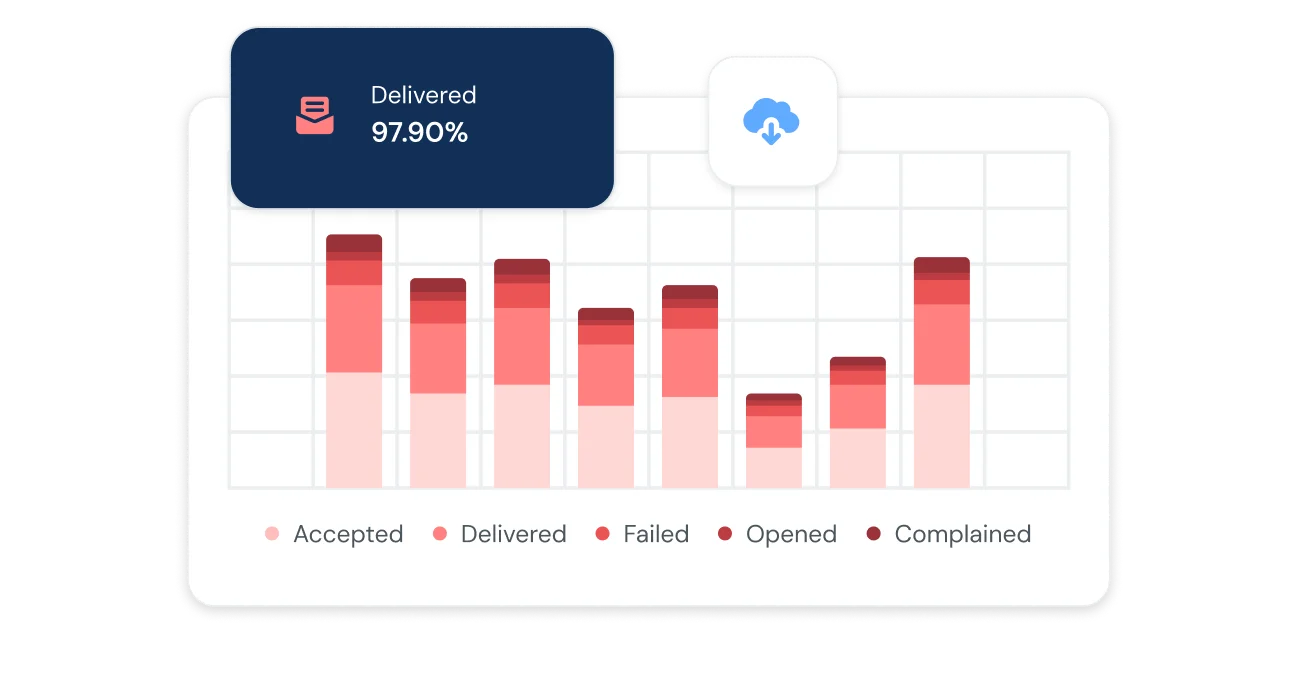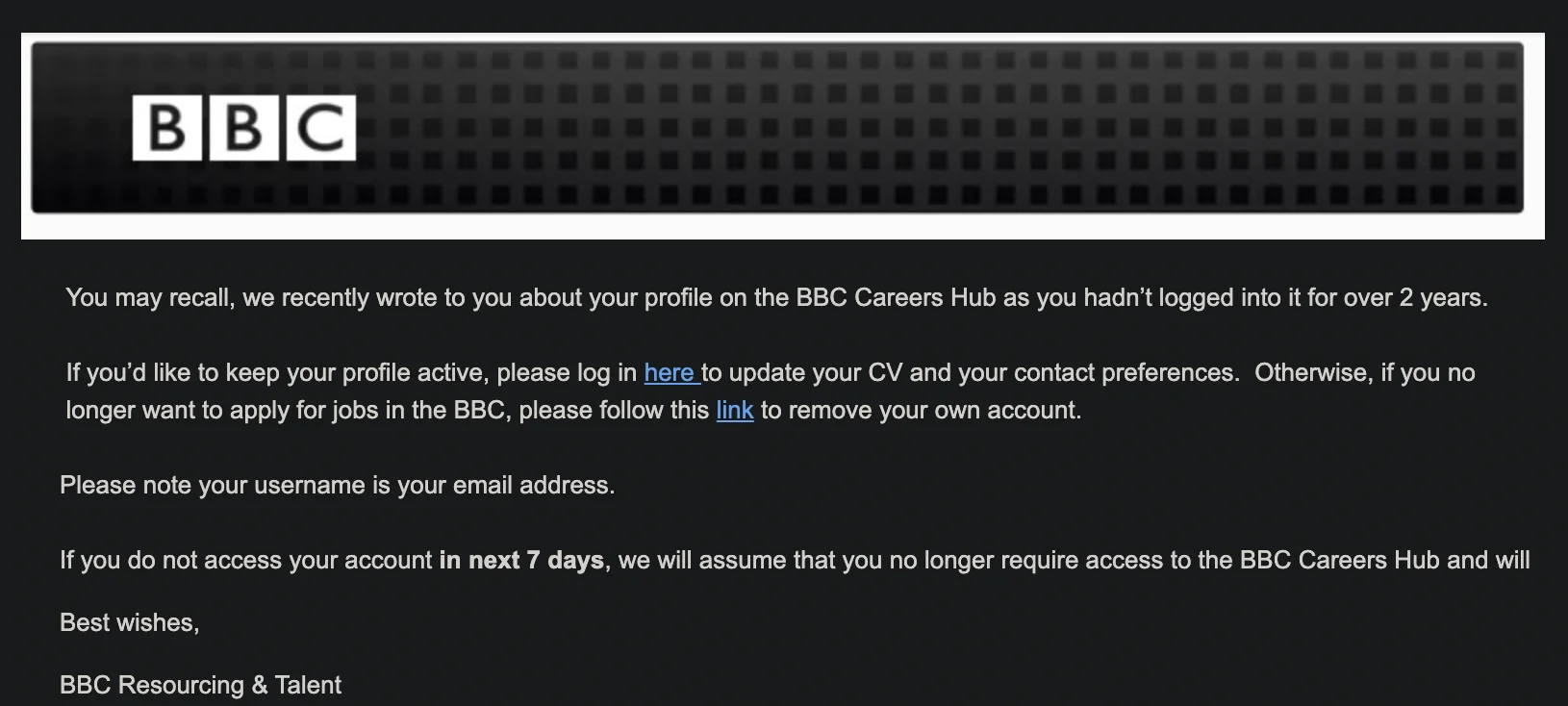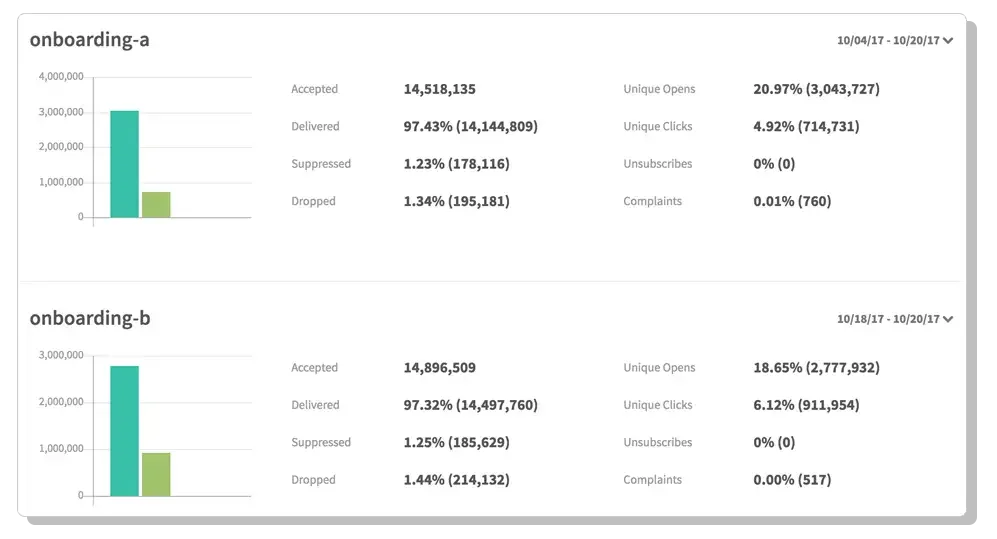Deliverability
Sunset policy and email engagement: A complete guide

Deliverability

Have you ever been on the receiving end of a long, drawn-out breakup? It’s awful. But the worst is when you simply get ghosted. They stop answering your texts and calls and simply fall off the face of the earth. You’re left wondering if they’re just temporarily gone or if the breakup is permanent. In this case, it’s sometimes best to just step up and either clarify your relationship or sever ties for good.
Businesses and their email subscribers are also in a relationship in the email marketing world. And sometimes, you end up in that gray zone where you’re unsure if your subscriber has broken up with you. They no longer open your emails and no longer engage with your messages. In this case, you can reach out to your subscriber and explicitly invite them back. Or, you might need to let your customer go.
Your company can implement a “sunset policy” to clean unengaged contacts from your mailing lists. In this article, we’ll learn what sunset policies are, why they’re important, and how they can help improve your email engagement. Finally, we’ll finish with how to implement a sunset policy.
A sunset policy is an email list segmentation strategy used to prevent you from sending emails to unengaged subscribers. The goal of implementing a sunset policy is to improve your engagement rates and email deliverability.
You can implement a sunset policy to determine when the “sun sets” on your relationship with disengaged contacts. Sunset policies help you focus on communicating with engaged customers and bid a quick hasta la vista to unengaged subscribers cluttering up your mailing list.
While all use cases and businesses are different, sunset policies are important to your email marketing efforts. In brief, sunset policies:
Let’s go over each of these in more detail below.
Preventative maintenance of your contact lists, like a sunset policy, ensures you’re sending emails to recipients who want your messages. An optimized sending list leads to better engagement, with the end goal of improving deliverability and inboxing. We’ll explain why engagement is so critical to good deliverability and why it all starts with a healthy mailing list.
Automation is never a bad thing! Implementing a sunset policy allows you to automate mailing list cleaning. You can set up your sunset on a particular schedule or with certain triggers as you move through your email marketing campaign.
Sunset policies structure your list and give you a clear idea of which subscribers to let go or keep to maximize your deliverability rates and provide accurate reporting.
You’ve designed a great HTML template and prepared a great email campaign, but there are no guarantees your email subscribers will receive, much less engage with, your email. Email delivery can be a bit of a crapshoot based on the whims of Internet Service Providers (ISPs).
You may think engagement isn’t very important if you’re making it into the inbox, but the truth is that your email deliverability needs engaged contacts. ISPs use engagement metrics (like open rates and click-through rates) to decide what messages make it into the inbox and what they consider spam.

If you have a healthy level of engagement, you’ll enter a cycle of ISP-approved deliverability into the inbox, which results in more engagement, and even better deliverability. If you have low or no engagement, prepare to meet the spam folder. This means bracing for the trifecta of low engagement, deliverability issues, and a damaged brand reputation.
Good email engagement rates mean good deliverability. Bad email engagement rates mean bad deliverability. It’s as simple as that.
When it comes to your email program, engaged subscribers are the people who will open and interact with your emails through their consumer lifecycle. Focus on your engaged email subscribers to keep your engagement high, your ISPs happy, and your messages at the top of the inbox where they belong.
As we mentioned above, every business and use case is different, and as such, requires different sunset policies. Here are a few things you should establish before implementing a sunset policy:
Decide if you’ll send unengaged customers a final permission pass to unsubscribe or a goodbye series, asking them if they’d like to continue to receive mail. Do not go gentle into that good night – it’s worth trying one last time to win back your disengaged contacts. You can do this by explicitly letting them know they’re being removed from your mailing list on a certain date. You can also encourage them to re-engage instead of leaving within the same message, as shown below.

Once you’ve established the above definitions, let’s look at how to implement your policy:
1. Segment your mailing list based on your rules of engagement. Sort your email subscribers into activity groups to determine email frequency. For example:
| Activity group | Level of engagement |
|---|---|
| Non-engaged | No emails |
| Somewhat engaged | ¼ emails |
| Well engaged | ½ emails |
| Super engaged | ¾ emails |
| Always engaged | All emails |
Remember, these are only guidelines, they are not hard rules. It’s important that you define your own activity groups based on your company’s engagement rates. If you’re not sure where to start, Mailgun’s deliverability experts Ashley Rodriguez and Nick Schafer have some tips for you in the following video.
Then, you can use tags to segment messages and keep track of email types and audiences.
2. Implement your guidelines. It’s important to note that one sunset policy doesn’t fit every organization, and you should tailor it to your audience size and message frequency. A possible schedule for your policy’s list removal or final re-engagement may look like one of the following:
| Email frequency | Sunset if last engaged |
|---|---|
| Daily | Three weeks ago |
| Weekly | Two months ago |
| Monthly | Six months ago |
3. Stick to a consistent sunsetting schedule. This helps you stay organized and regularly purge uninterested subscribers from your lists with minimal fuss.
Let’s look at a specific example of how you can implement sunset policies with Mailgun. Use our segmentation tools to easily separate your lists and send highly-targeted messages to your subscribers based on engagement (low-engagement subscribers versus high-engagement subscribers), demographics, and more. As mentioned above, you can also use tags to organize your mailing list and your messages.
Once you’ve segmented your list, you can see how different messages perform with engagement metrics like open rates and click-through rates.

A proactive, preventative approach to email list hygiene via a sunset policy ensures that you are always sending to recipients who want to (and will) engage with your email. ISPs, now more than ever, rely heavily on user engagement metrics to determine inboxing and spam filtering.
Keep that engagement high by sending to email subscribers who want to read what you have to say. As always, don’t hesitate to reach out. Or, if you’re ready to get cracking, head on over to our segmentation tools and get started today.